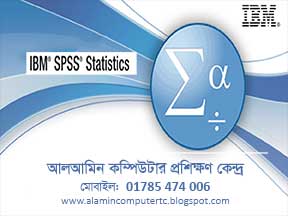
segetum, however, no study has been conducted about the effect of the cell-free supernatants of Xenorhabdus sp. Earlier studies focused on the efficacy of different EPN species on the larvae of A. and Photorhabdus bacteria were able to induce substantial mortality against the tested pests.
#Spss 16.0 free download for windows 10 keygen

These studies revealed that the cell-free supernatants of Xenorhabdus sp. bacteria have aroused the interest of many researchers due to their biocontrol potential against a variety of agriculturally important pests (Cevizci et al. Recently, the cell-free supernatants of Xenorhabdus sp. After a few generations with the depletion of the food resources, the IJs emerge from the cadaver of the host into the soil environment to search for a new potential target (Adams et al. The death of the host generally occurs 48–72 h after infection due to the joint effects of bacterial multiplication and excretion/secretion products of infective juveniles (Shapiro-Ilan et al. During the multiplication of the symbiotic bacteria in the host hemolymph, they secrete a wide range of toxins, killer proteins and antimicrobial compounds that lead to the death of the host and the inhibition of the growth of other microorganisms (Vicente-Díez et al. in Heterorhabditis spp.) into the host hemolymph which serves as a nutrition source for both symbiotic bacteria and IJs (Boemare et al. Then, IJs release their symbiotic bacteria ( Xenorhabdus spp. Once IJs locate a possible host in the soil environment, they gravitate to their target and penetrate the host hemolymph through natural openings such as the mouth and anus (Lewis et al.

The Infective juveniles (IJs) of EPNs are soil-adapted and obligate parasites of insects (Kaya and Gaugler 1993). 2015).Īmong the various entomopathogenic organisms, entomopathogenic nematodes (EPNs) (Steinernematidae and Heterorhabditidae) hold particular importance for the control of soil-dwelling insect pests (Hazır et al. Therefore, recently, many researchers are in search of finding environmentally-friendly control methods for the management of the larvae of A. In addition, indiscriminate use of insecticides leads to various environmental problems as well as development of resistance and human health problems (Ansari et al.

2019).Ĭhemical insecticides used against this pest generally failed to satisfy the expectation of growers because of the soil-dwelling habits of the larvae (Chandel et al. segetum larvae is challenging due to their nocturnal feeding habits and the presence of larvae is often detected when the seedlings of the plants are already severely damaged (Chandel et al. segetum larvae, they generally feed at night or during overcast days and stay hidden under the ground during daylight hours (Capinera 2001). segetum attack a variety of economically important crops including corn, potato, and sugar beet (Chandel et al. The turnip moth, Agrotis segetum (Denis & Schiffermüller) (Lepidoptera: Noctuidae) is a polyphagous pest occurring throughout Europe, Asia, and Africa (EPPO 2021). However, further studies are required to test the effectiveness of both EPNs and the cell-free supernatants of their symbiotic bacteria in field conditions. The results indicated that the cell-free supernatants can be an ideal application for young larval stages of A.

The cell-free supernatants were more effective against the 3rd instar larvae and the highest mortalities were recorded as 42 and 60% in the contact and leaf disc bioassays, respectively. The 4th instar larvae were more susceptible to infective juveniles (IJs) and mortalities over (95%) were achieved by all tested EPN isolates at the concentration of 100 IJs/cm 2 after 72 hrs of exposure. In the present study, the virulence of native EPN isolates and their cell-free supernatants of symbiotic bacteria were tested against the 3rd and 4th larval instars of Agrotis segetum (Denis & Schiffermüller) (Lepidoptera: Noctuidae) under laboratory conditions (25 ± 1 ☌ and R.H. Although EPNs are well studied against many agricultural insect pests, the efficacy of their symbiotic bacteria still remains unclear for many insect pests of agricultural importance. Entomopathogenic nematodes (EPNs) (Steinernematidae and Heterorhabditidae) and their symbiotic bacteria are pathogenic for a wide range of insect pests and have been used successfully as a biological control agent.


 0 kommentar(er)
0 kommentar(er)
